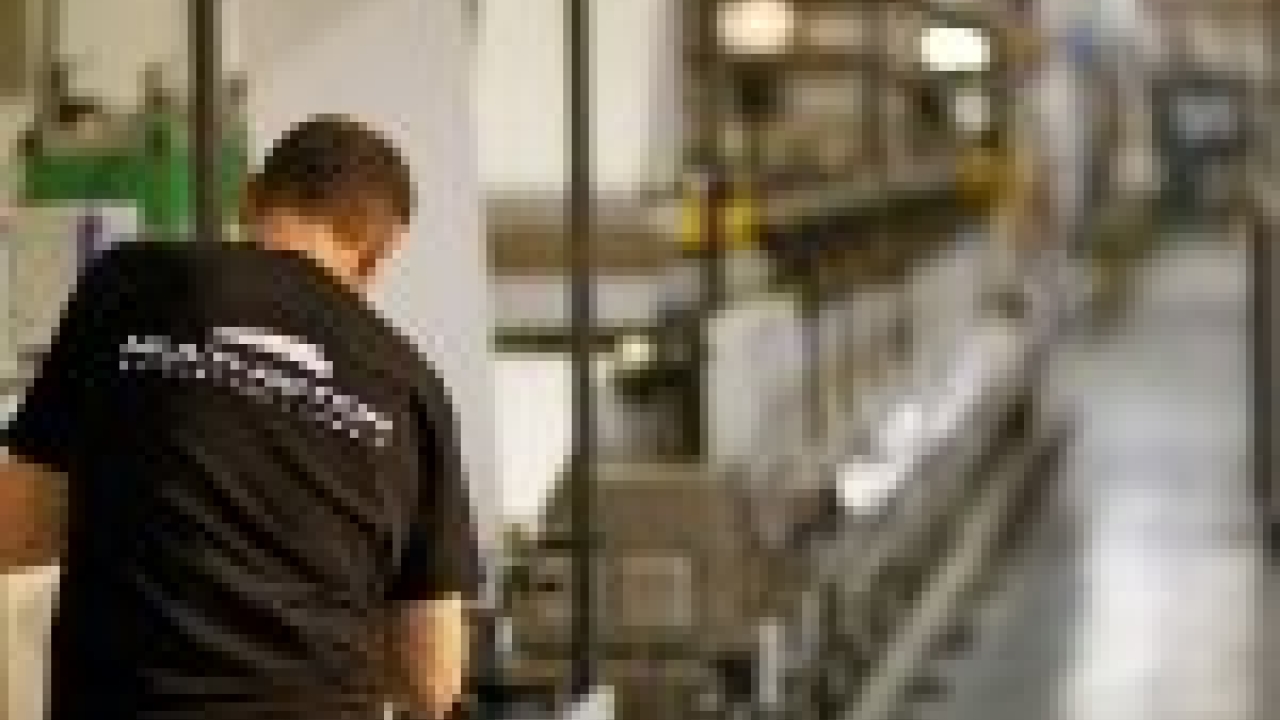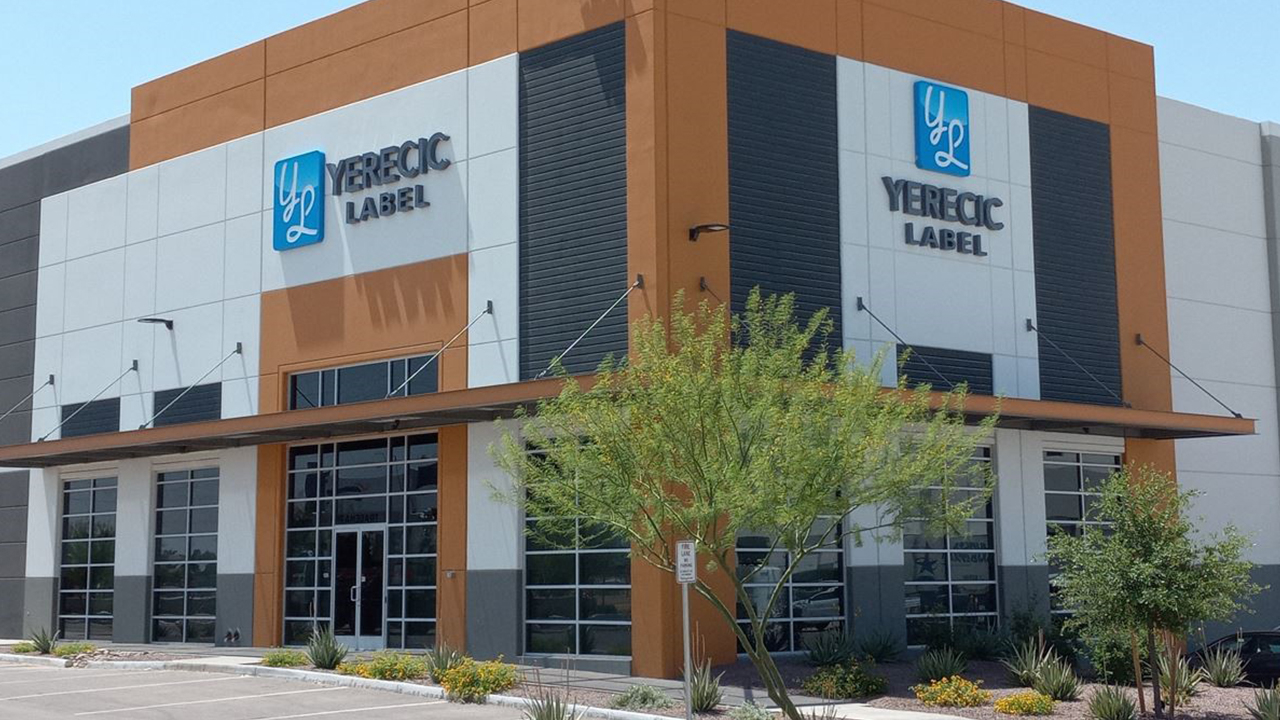Multi-benefits with in-line converting

Multi-Action Etiquettes entered the label market with ETI Converting equipment and no preconceived notion of label manufacturing. Danielle Jerschefske reports on a successful debut
Multi-Action Etiquettes in
In 2004, Bourbonnière saw the opportunity to enter the market as a full-fledged label converter using ETI Converting equipment. His first purchase was a Labeline machine that’s capable of manufacturing rolls of pressure sensitive material in-line with flexographic printing heads. Bourbonnière says, ‘We kept an open mind with how to manufacture a label. With no preconceived notion there was no problem accepting the idea. We think it’s logical to produce our own stock.’
Multi-Action has found great flexibility, cost-savings and accuracy by manufacturing its own materials. It’s also able to create products in-line that would be far more complicated with pre-ordered material. Does this denote Multi-Action as a true label manufacturer?
Freedom to innovate
‘R&D with ETI technology is day to day,’ Bourbonnière explains. ‘There is just so much opportunity – the flexibility with adhesive pattern and the ability to do reverse printing without having to kill the adhesive, linerless [labels] for the medical industry. And we have nice margins especially when using specialty adhesives and other advanced materials.’
Using the in-line coating and printing system, operators simplify the production of complex PS materials, allowing Multi-Action to break into and continue participation in a variety of markets including tickets, tags, industrial, wood, pharmaceutical, beverage and more.
Anthony Bourbonnière, Multi-Action’s vice president of sales, says, ‘we’re able to sell off the track and more than just conventional labels. We can customize complicated applications for our customer, which helps us expand outside the traditional.’
The company is constantly working on special projects. It’s successfully created a micro-perforated label with glue that extends the lifespan of perishable foods. By developing the right adhesive, and cost-effectively implementing its use, Multi-Action took its service from regular to super. The converter is working to take this technology a step further with an adhesive that removes ethylene from the container to preserve food even longer. Bourbonnière continues, ‘When you don’t know you can’t achieve it, then you find a way to do it.’
R&D details are documented and tracked through the MIS system keeping all parties up-to-speed with development. The transparency strengthens Multi-Action’s customer service, and serves as a guideline for meeting deadlines.
Multi-Action has created a successful solution for a medical industry client using a linerless material and heat-seal technology to improve control of medicine distribution. Bourbonnière explains: ‘These clients are saving a significant amount of money with the product; still, one key to the sale was our portable printers. The customer needs only to source from one place for all their label needs. In fact, we recently signed a contract with a new, very large customer who we also sold a number of thermal and inkjet printers to.’
Margins
Multi-Action earned a long-term contract with one of
‘We can produce commodity labels at a competitive price that yield good margins, saving around 20 to 25 percent on raw material costs by manufacturing the material ourselves,’ Bourbonnière explains. ‘The converter’s coating machines are running at 500 ft/min for blank labels with no coatings.’
Quality
Multi-Action coats silicone and adhesive consistently with an accuracy of +/- five percent. Bourbonnière says, ‘I can honestly say that our product is more accurate than what some suppliers can offer, and we are coating in-line while printing.’
A learning curve was required to master the complexities of the equipment, but after six months sales increased to surpass the cost of the original investment. The six-month new Labeline has eight UV heads, five with dryers for water-base, cold foil and screen capability, and a re-registration system. ‘This newest edition offers a quicker turnaround because the unwind can handle heavier rolls, keeping us running longer. And its been designed without the wash basin and easy slide out cassettes which reduces change over time and the amount of wasted ink.’ It takes one operator to run the entire machine. All operators were trained from scratch with people that were not familiar with printing whatsoever, and definitely not familiar with the flexo process. ETI played a vital role in this training.
‘ETI has been great throughout our development,’ Bourbonnière says. ‘We have learned a lot together and shared a lot of information. It’s been amazing.’ Multi-Action has achieved significant growth and is rapidly gaining success from the benefits that it’s garnered by converting material in-line while printing. Flexibility is a catalyst for innovation. New opportunities; new business. Waste reduction, accuracy, and solid production speeds increase margins that are difficult to come by in label manufacturing these days. Business that wouldn’t normally be viable, can be accepted while still turning a profit. With only around one percent of the world’s converters using ETI equipment, awareness of the advantages is increasing, and adoption is progressing. Bourbonnière concludes, ‘I think this is a growing trend.’
Bilingual customer service
Multi-Action has a bilingual customer service department headed by an associate who has fantastic English language skills. Bourbonnière explains, ‘Her skills have been critical to gaining new business, and supporting it, because there are often large national companies servicing all of
Graphic design
Talented associates in the graphic arts department assist customers in designing their artwork to best print on the ETI equipment. The company is reviewing digital plate-making equipment, but does not like the solvent-based wash out it requires. ‘This would take away from our sustainability,’ Bourbonnière says. ‘We recently pushed our quality standard to another level. The new generation of ETI printhead in kiss print mode, allowed us to push it at 240 lines screen at 0.4 percent gradation. At this level, we see no needs in buying offset or gravure technology.’
Sustainability
Sustainability has always been a priority at Multi-Action. It is both Forest Stewardship Council (FSC) and Sustainable Forestry Initiative (SFI) certified, and urges customers to use PCW facestocks whenever they can. Bourbonnière says, ‘Customers are willing to purchase the PCW material because they don’t need to pay the mark up charge when they order from us. Here they can use the recycled material at nearly the same cost as clean material.’
The ability to manufacture labelstock with a thinner, 1.2 mil PET liner has been a huge success with Multi-Action’s large clients. ‘They like that it’s recyclable. This wins us large amounts of big business.’ Clients also enjoy the productivity improvements found in the strength of PET, controlling the number of breaks and downtime, and with fitting more labels to a roll.
The company attributes its success with PET liner label stock production to its partnership with label printer supplier Toshiba. Together they were able to test print and apply capability to gain a complete understanding of what the customer needs.
Digital
Multi-Action uses a reconfigured DeGrava digital printer for much of the digital work that comes through its door. A sturdy Digital Finishing System (DFS) is used for die cutting and rewinding. The company is interested in the new Epson UV inkjet press to be shown at Labelexpo Americas.
MIS
Bourbonnière designed the company’s MIS system that works through internet Explorer. It requires users to simply click through the system in order to see the company’s schedule, what’s needed and what’s running on each press, and giving all necessary details to support them as well.
It tracks work in real time. Once a sales rep creates a quote, it is automatically pushed through the system to ensure everyone, company-wide, is aware of the group’s movement. The next step is to automate inventory control with a barcode system.
ETI Converting: global update
Danielle Jerschefske reports on how global converters are using ETI's unique label converting equipment
ETI Converting has solidly advanced into the global market over the last two years. The in-line coating and printing machinery supplier based in
ETI recently shipped a 20.5 in Labeline to a large Middle East-based printer who already uses a 16in machine to produce a variety of PS products including airport luggage tags made of thermal transfer material for a major local airline. With the added width, the converter has increased capacity and is able to fit three more luggage tags across the web.
The new press will be dedicated to producing these baggage tags 80 percent of the time. All in-line, the converter places lamination on the back of the material; incorporates the thermal stock, reverse prints the liner, silicone coats the material, coats with adhesive, laminates the entire stock, prints on the front-side, die cuts and reverse die cuts, and strips where the labels are finally rewound and shipped to the airline. ETI coating machines have an electronic device to measure the thickness and consistency of the adhesive as it is applied to ensure consistency and accuracy.
ETI says the finished product for this converter is half the cost per MSI of what the raw material cost is when purchased as raw stock. Maxime Bayzelon, VP of ETI Shanghai, says, ‘We’ve been conducting rigorous testing because he wants to ensure that the coated laminate is strong enough to withstand aggressive baggage handling; therefore we are ensuring that the die is not cutting through the adhesive.’
This article was published in L&L issue 4, 2010
Click here for more stories about ETI Converting on L&L.com.
Stay up to date
Subscribe to the free Label News newsletter and receive the latest content every week. We'll never share your email address.


